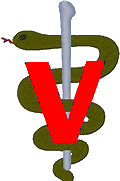www.DiamondAvian.com
www.TheBirdVet.com

Pellets are the only diet that can offer complete and balanced nutrition. Your bird's diet should be at least 80% pellets. The remaining 20% can be any treat; fruits, vegetables, pasta, rice, beans, seed, and many other foods are acceptable treats. Persistence is the key to a better diet for your bird. You must first believe that you are doing the best for your bird. If you will follow this method your bird will be eating pellets in two to four weeks.
At this point your bird can be considered to be on Harrison's. You should wait for at least a several days before giving seed as a treat until you know there is full conversion without fear of de-conversion back to seed.
By converting your bird to a pelleted diet, you will be adding several years to his life span and enhancing that life by preventing many nutritionally related health problems. Your bird will look and act healthier. The feathers will be brilliantly colored with fewer stress marks. In short, putting your bird on pellets will be the best thing you can ever do for you bird.